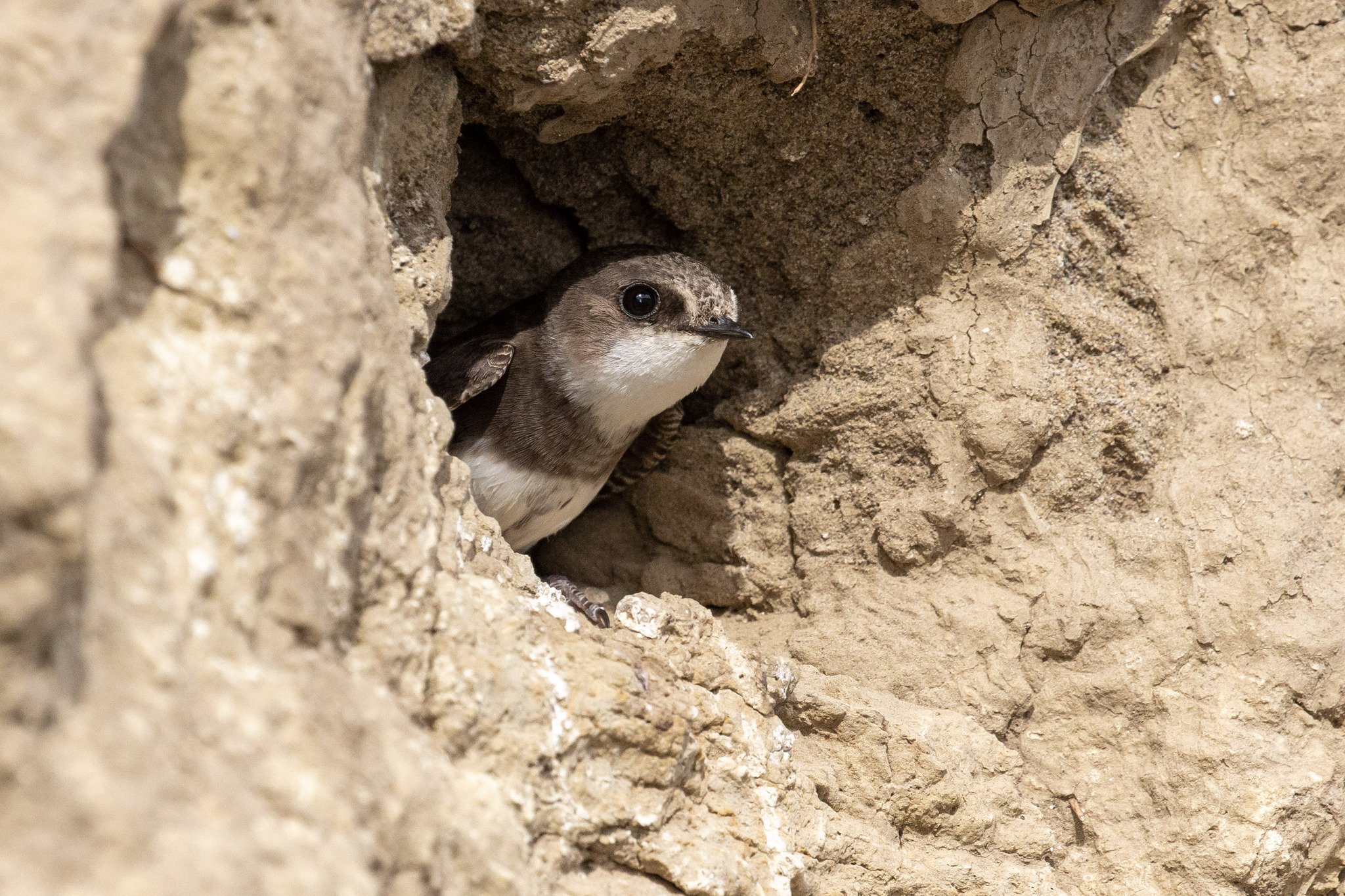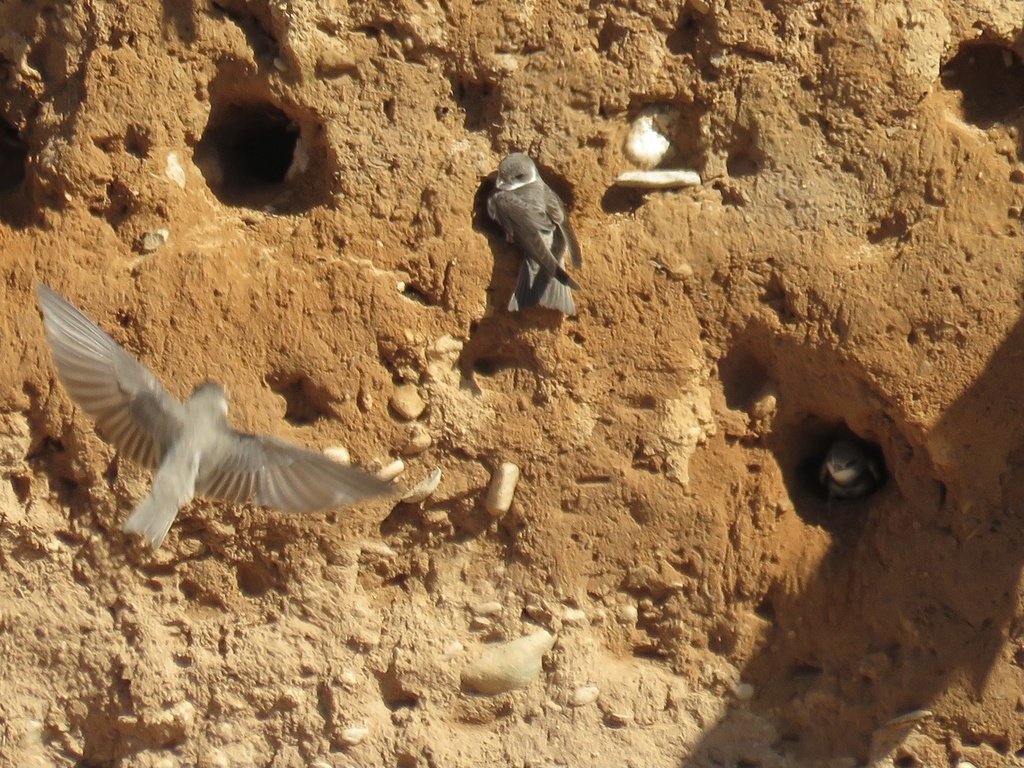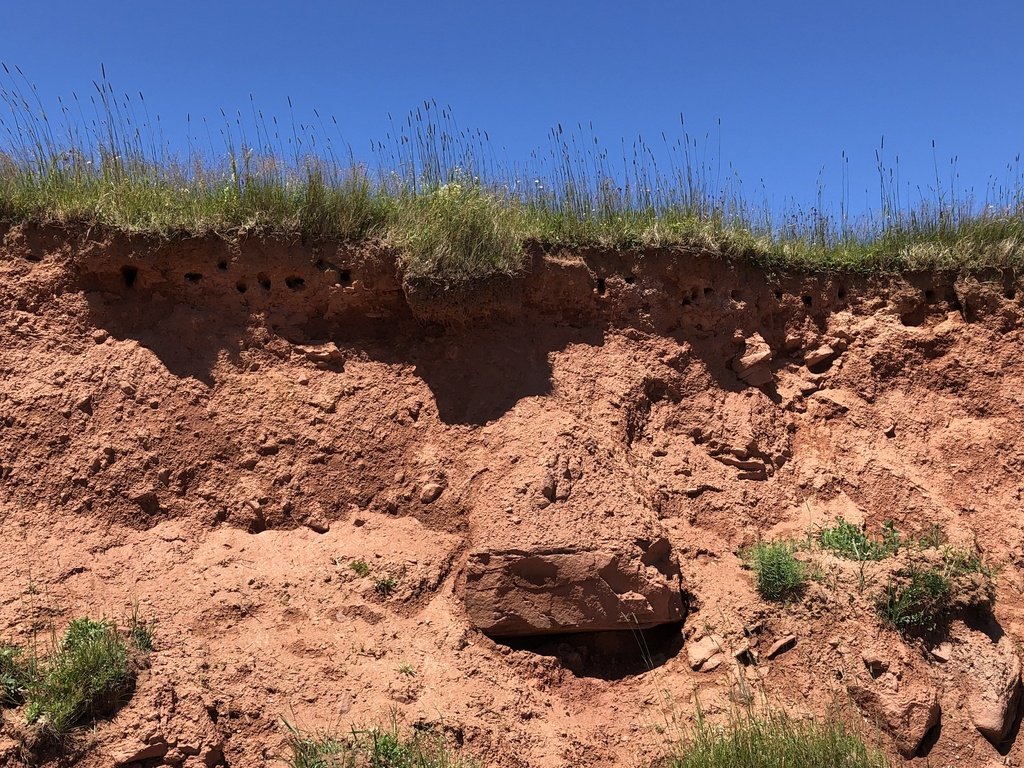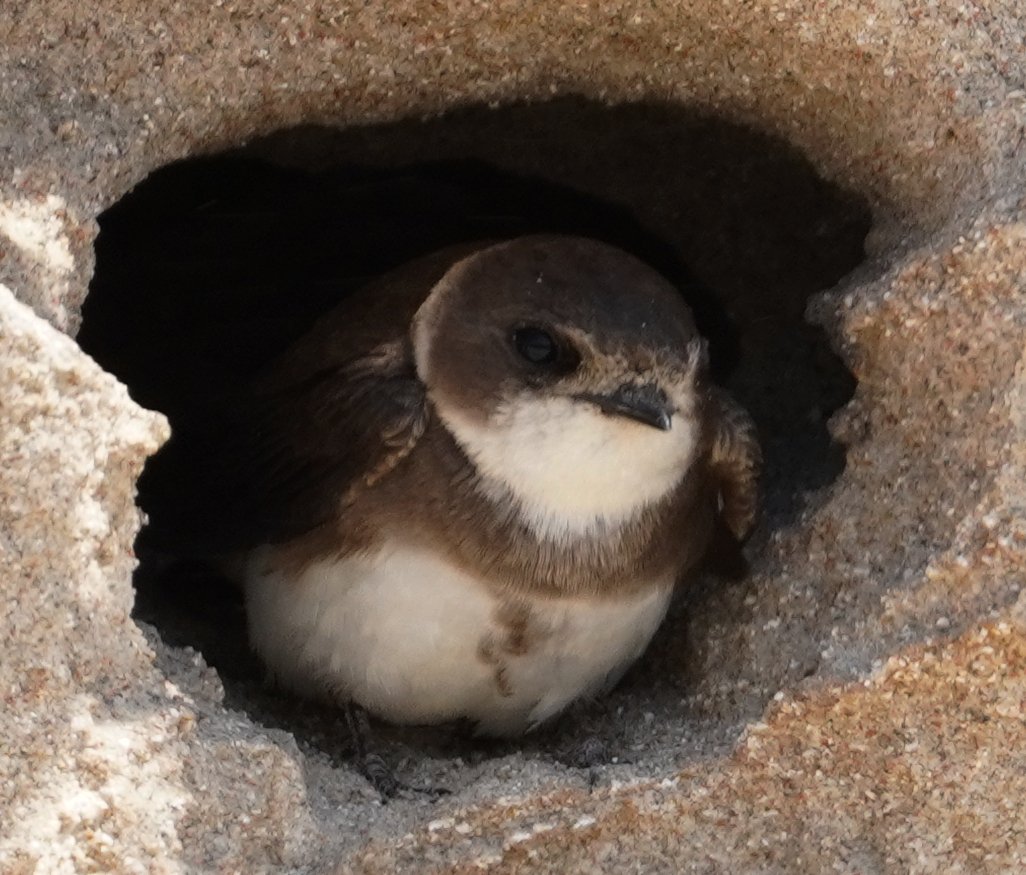Bank-Burrowing Brown Birds
Bank-Burrowing Brown Birds
WRITTEN BY ENZO FERLAND, COMMUNICATIONS INTERN
Scritch scratch, scritch scratch. A little bird sits in a small crevice on the side of a steep riverbank. Scritch scratch, scritch scratch. The crevice grows larger and larger as the bird continues to burrow into it. Scritch scratch, scritch scratch. Eventually, the crevice is large enough to fit several of his fellow birds and a nest for his young. He’s made a home for both himself and his potential family.
This is the life of a male bank swallow (Riparia riparia). Also known as sand martins in Europe, these brown and white birds nest by digging into the soil at steep banks and bluffs. These locations allow them to place their nests high enough to both avoid surface predators and to provide plenty of space outside the burrows to fly around and snatch flying insects mid-air. Exceptionally social birds, bank swallows gather into colonies when burrowing, placing several holes on the same bank rather than build their nests away from each other. This of course leads to competition for the males, so to attract a mate they will dance outside of their burrows.
The females then flutter around the colony, checking the various burrows and their diggers to pick one as her mate. Once chosen, she begins to build the nest within the burrow, gathering grass, leaves, straw, and other similar materials. While these burrows may appear too small from the outside for a nest, two birds and babies, they are over half a metre deep, with an enlarged chamber for the nest itself. This provides ample space for the birds and insulates the nest from outside shifts in temperature. Though, when they feel cold, they are known to huddle together to conserve warmth.
Traditionally, bank swallows mainly dig their nests along riverbanks or coastal shorelines, like those at our Cape Enrage Nature Preserve. But the advent of modern construction has provided them new places to build: the large mounds often found at construction sites. While this new-found habitat can sometimes be a help to the birds, it is occasionally a threat to their safety when construction crews move the dirt before their breeding season ends, which runs from mid-April to late August.



Under threat
Why should bank swallows need to venture from the habitat to which they owe their common name in search of potentially precarious homes at construction sites? One major reason is human-made changes to riverbanks and shorelines that have driven a drastic reduction in their habitat.
‘Shoreline hardening’ is the big culprit. It involves placing large cement walls or piling large rocks against the land to prevent bank or shoreline erosion. This process prevents bank swallows from being able to scritch scratch their way to a new home as the hardened soil or rocks are too difficult for the birds to dig into or by making the banks less steep and therefore no longer a suitable nest location. Plus, shoreline hardening may further disrupt their ability to find new nesting sites as it changes the flow of soil movement. This is all exacerbated by human-driven climate change, with local sea level rise and more extreme weather accelerating the natural rate of coastal erosion.
Another threat is the bank swallows’ food source, with pesticide use heavily reducing the number of aerial insects which these, and most aerial insectivores throughout North America, rely upon.
Together these two threats have resulted in an estimated 99 per cent decline in the bank swallow’s population in New Brunswick since 1973. The bird is classified as ‘endangered’ by both the federal government and provincially under New Brunswick’s Species At Risk Act. This means that they are at risk of disappearing from the province and country unless something is done to protect them from these threats.
Observation © Liam Singh · some rights reserved
Helping the bank burrowers
One way we can help bank swallows while still addressing the issues caused by coastal erosion is practising something called ‘living shorelines.’ This involves planting native species and strategically using natural materials (like logs and rocks) to reinforce the shoreline in ways that simulate how nature would protect the bank. Living shorelines protect bank swallow habitat and create habitat for other wildlife, meanwhile the intervention gets stronger over time as the native plants’ roots grow and expand, better holding the soil in place.
As for bank swallows nesting in construction piles, we can better protect the birds by making the piles of dirt less than 70 degrees steep if they’ll be moved during breeding season (as this angle won’t be suitable for bank swallows), or making them more than 70 degrees steep outside of breeding season or if the pile definitely won’t be used or moved during that time span. In cases where bank swallows begin to nest in an active construction site, we should halt any further excavations until the birds leave for the season to ensure they aren’t hurt.
Here at the Nature Trust of New Brunswick, we’ve been helping the beloved bank burrowers by protecting several locations where bank swallows like to nest. Beausoleil Nature Preserve along the Skutik (St. Croix River), Joseph Allain Nature Preserve along the Northumberland Strait, James C. Yerxa Nature Preserve along the Keswick River, and Grindstone Island Conservation Easement and Western Isles Nature Preserve in the Bay of Fundy all protect vital habitat for these little birds. So, if you would like to see them swooping and scritching about, consider a visit to one of these beautiful places to catch a glimpse!
We’d love to hear your thoughts on the bank swallow or other bird stories and sightings!
Feel free to get in touch with our communications team to share stories, pictures and videos at communications@ntnb.org



